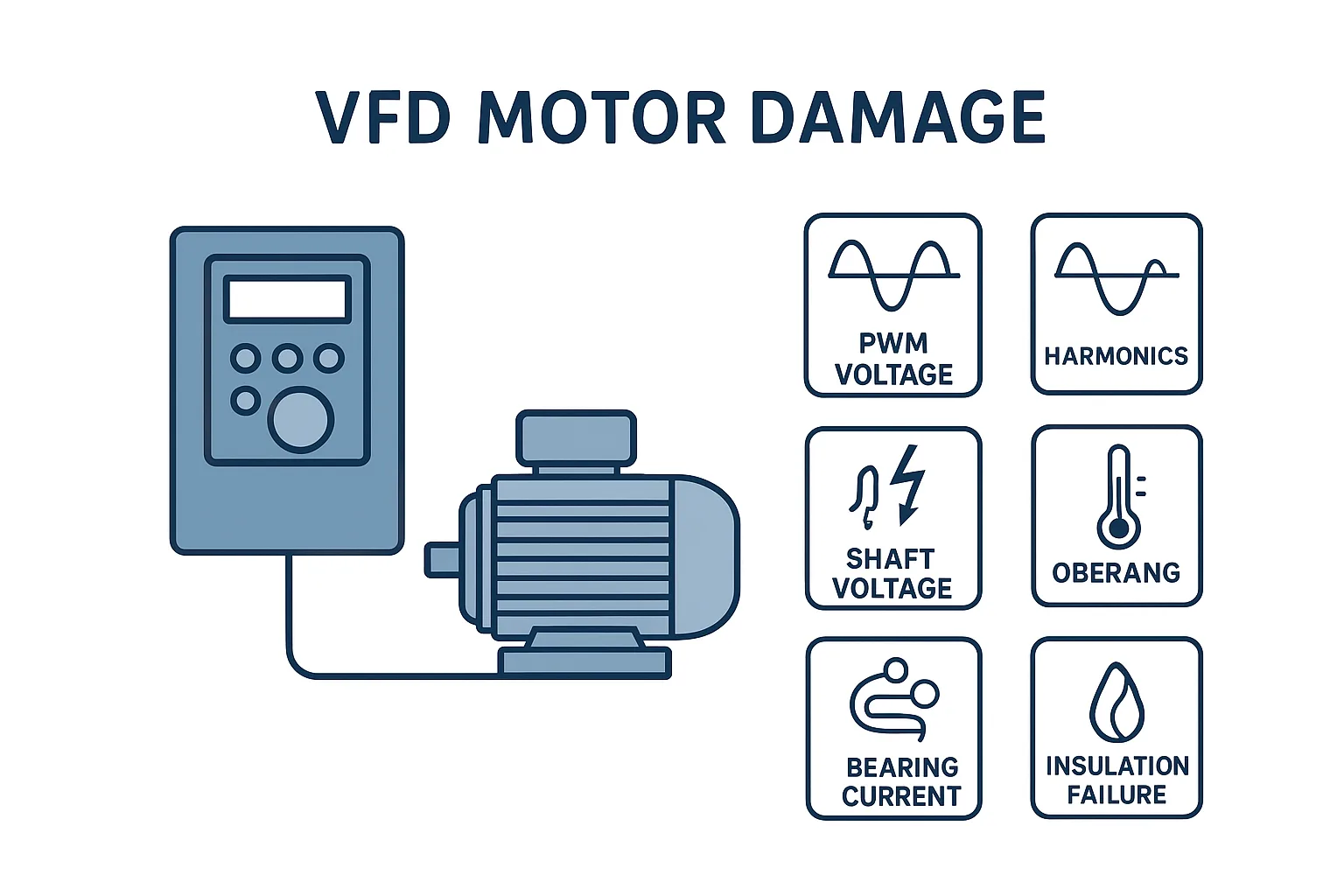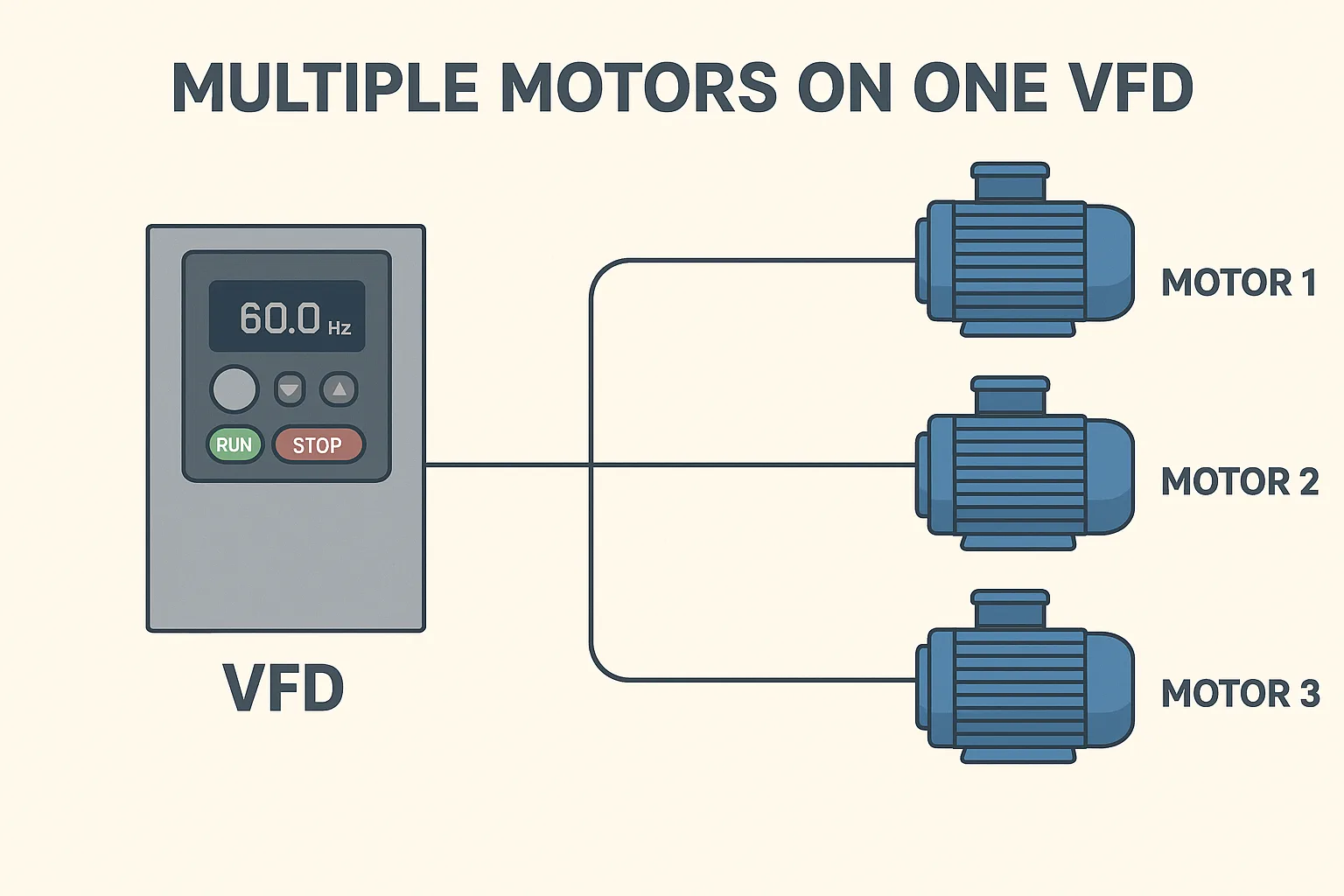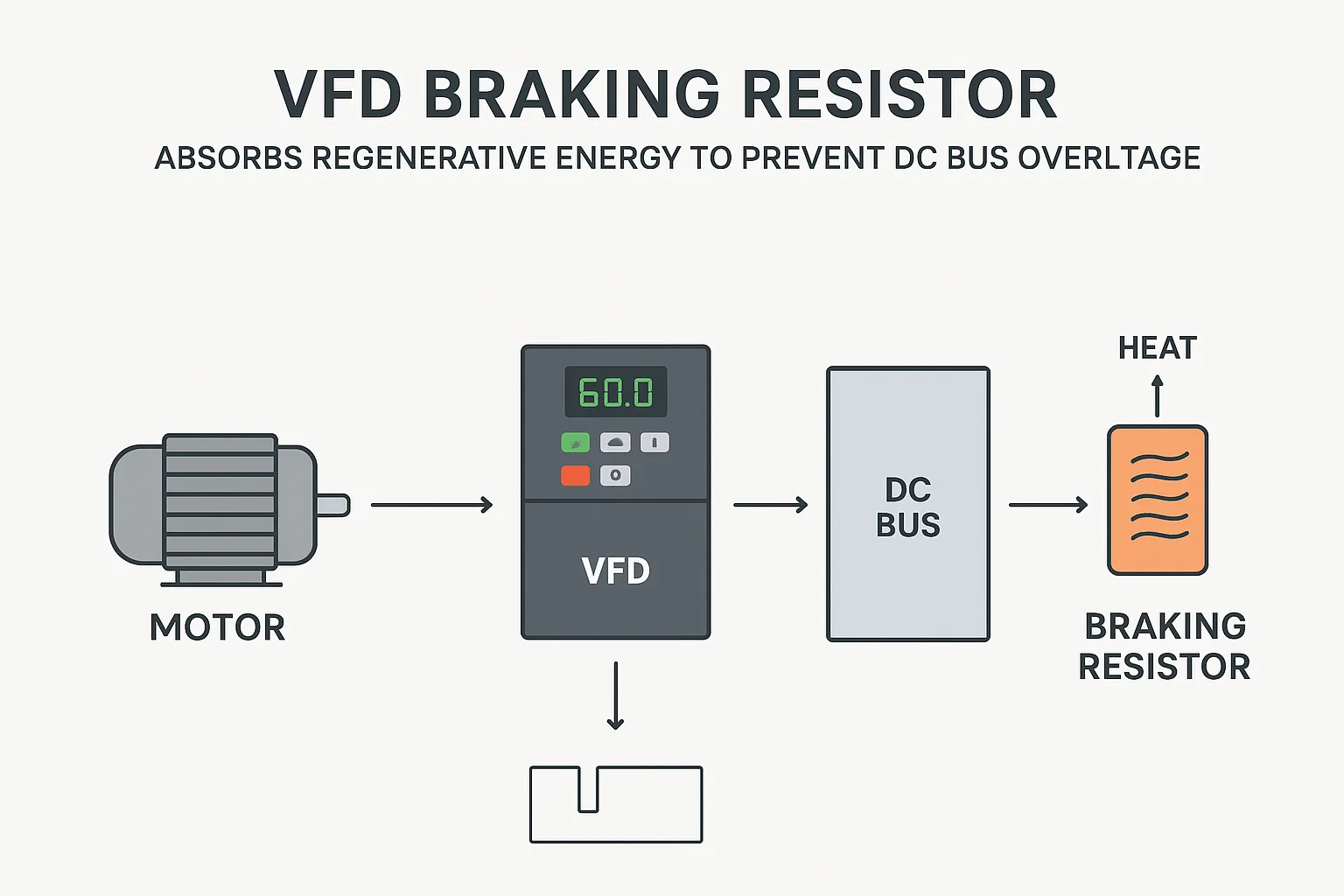VFD Troubleshooting Guide
Is your VFD showing unusual behavior or unexpected faults?
Don’t worry—variable frequency drives (VFDs) may occasionally experience operational anomalies, but most issues can be traced and resolved with proper diagnostics.
This guide will help you become a VFD fault decoding expert,we’ll walk you through the common symptoms, explain what they mean, and provide step-by-step solutions using proven industrial techniques.

What Is a VFD Fault?
Types of VFD Faults
- Momentary overcurrent
- Minor overheating
- Temporary voltage fluctuations (e.g., power grid instability)
- Internal component failure (e.g., IGBT short circuits)
- Direct ground faults
- Severe overload or locked-rotor conditions
Common Causes of VFD Troubleshooting Issues
Cause Type | Description | Linked Faults |
|---|---|---|
Harsh Environment | Heat, moisture, dust, vibration | vfd overcurrent fault, ground fault |
Electrical Failures | Loose wires, phase loss, voltage dips | vfd fault, overcurrent fault on vfd |
Load/Motor Mismatch | Wrong settings, oversized loads | vfd drive repair, frequency drive motor |
Internal Component Failures | Aging capacitors, IGBTs | electrical vfd, vfd mechanical |
Types of VFD Faults and Their Symptoms
When your variable frequency drive (VFD) shuts down or flashes a warning light, it’s not just malfunctioning—it’s issuing a health report.
Each VFD fault code and symptom corresponds to a specific issue, and understanding these signals is key to fast and accurate troubleshooting. Here’s how to interpret the “vital signs” of your VFD:
Fault Type | Typical Symptoms | Common Causes | Recommended Action |
|---|---|---|---|
Catastrophic Failure | Burning smell- Sparks- Blown fuses | IGBT or capacitor failure- Severe overvoltage- Cooling system failure | Disconnect power immediately; inspect power board and internal components; replace damaged parts. |
Power Interruption | Instant shutdown- UV (Undervoltage)- Phase Loss alarm | Grid sag or brownout- Power outage or upstream breaker trip | Check incoming power supply, verify voltage stability, and restart after source is confirmed stable. |
Intermittent Fault | Random errors (OV, OH, etc.)- Motor vibration or jerking- Unstable ops | Loose terminals- EMI/noise- Aging capacitors- Blocked cooling path- Tight parameter margins | Inspect wiring, signal shielding, cooling system; adjust acceleration/deceleration parameters. |
Overcurrent / Overload | OC / OL codes lit- Sudden motor stop- Acceleration surge or smoke | Impeller jam- Motor short circuit- VFD undersized- Output cable short or overload | Check motor load and shaft, measure winding resistance, verify drive sizing and output cable condition. |
Ground Fault (GF) | GF alarm- Tingling cabinet- Frequent RCD trips | Motor/cable insulation failure- Moisture ingress- Corrosion-induced short circuit | Use megohmmeter to test motor, cable, and VFD insulation; isolate power immediately for safety. |
Think of VFD fault codes not as random glitches—but as the drive’s way of speaking. The better you understand its “language,” the faster you can restore system health and avoid costly downtime.
VFD Troubleshooting Step-by-Step Checklist
1.Visual Inspection
Immediately disconnect the power supply and perform a careful visual check for signs of physical damage—such as burn marks, bulging capacitors, loose terminal connections, non-functioning cooling fans, or dust accumulation. This is the first and most essential step in effectively troubleshooting VFD drives.
2.Verify Power Supply and Wiring
- Input voltage and phase configuration are correct
- Input/output terminals are tightly secured and free of corrosion
- DC bus voltage remains stable and within the rated range
3.Check Control Signals
Measure the speed reference input (analog or communication) to ensure it’s stable, with no noise, interference, or signal loss.
Control circuit issues are among the most frequent root causes when troubleshooting VFD drives.
4.Interpret Fault Codes
These codes offer direct insight into the drive’s operating condition and are key references in any effective vfd drive repair process.
5.Check the Motor and Wiring
- Confirm proper torque on output terminals
- Use a megohmmeter to test insulation integrity of motor and cables
- Ensure motor model, power rating, and electrical parameters are fully compatible with VFD settings
6.Assess Environmental Factors
Harsh environmental conditions can significantly reduce equipment lifespan, making environmental control a key part of preventive vfd maintenance.
7.Document the Entire Process
Thorough documentation supports future repairs, ongoing vfd maintenance, and root cause analysis for persistent or recurring issues.
Using Tools to Diagnose VFD Problems
Tool | Application |
|---|---|
Multimeter | Checking input/output voltage, resistance |
Oscilloscope | Capturing transient faults or control signals |
Real-time monitoring and diagnostic |
VFD Fault Code Reference Table
Fault Code | Description | Likely Cause | Recommended Fix |
|---|---|---|---|
OC | Overcurrent | Load spike, short | Check load & motor |
GF | Ground fault | Insulation failure | Check motor wiring |
OH | Overheating | Poor cooling | Clean fans/heatsink |
UV | Undervoltage | Phase loss, dip | Check input voltage |
How to Prevent Future VFD Failures
To prevent unexpected shutdowns of VFD drives, it is essential to implement an active VFD maintenance plan:
Strictly adhere to a regular maintenance schedule: Establish and enforce a maintenance schedule based on operating hours. Key areas include: Regularly clean air filters and cooling fans (recommended monthly/quarterly) to ensure proper heat dissipation; inspect and tighten all electrical connections (using a torque wrench); monitor DC bus voltage ripple (indicating capacitor health).
Critical data and spare parts management: Back up all VFD parameters (including motor data and application parameters) to ensure rapid recovery after a fault. Keep critical VFD components in stock, such as cooling fans and spare control cards (if applicable), to minimize downtime.
Empower maintenance teams: Conduct VFD troubleshooting training. Ensure maintenance personnel not only know how to operate the equipment but also understand the principles, identify early warning signs (such as abnormal noise or slight temperature rise), and master standardized VFD maintenance routines, such as safe cleaning, parameter backup, and basic measurements.
Core: Transform reactive repairs into proactive maintenance by standardizing operations, controlling the environment, and enhancing personnel skills to maximize VFD reliability and service life.
Conclusion
Efficient and safe VFD troubleshooting depends on a systematic approach: Always follow power-off safety procedures. Start with a visual inspection and gradually verify the power supply, signals, wiring, and environment. Accurate interpretation of fault codes is a core skill; be sure to consult the manual. After a thorough investigation, be sure to back up all parameters and record the process. Mastering this process, combined with preventive VFD maintenance, can significantly reduce downtime and ensure production.





